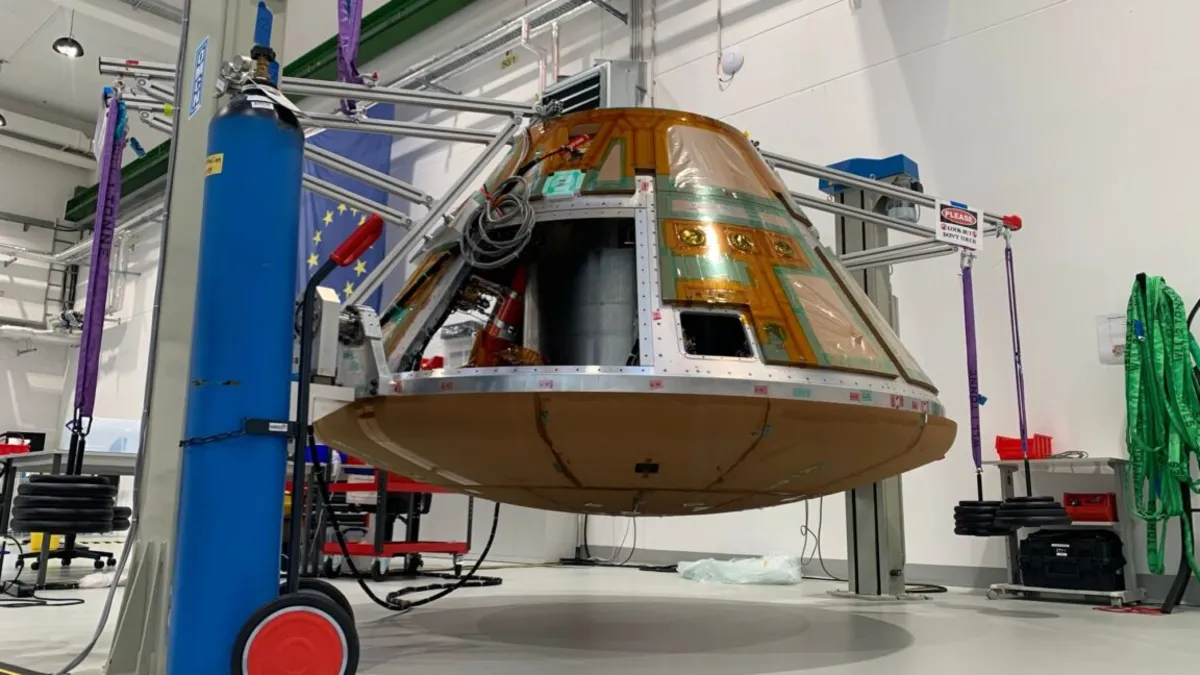
A European company focused on developing orbital spacecraft for cargo and future human missions has made significant strides this week with a successful test flight of its Mission Possible vehicle. This flight marked a pivotal moment as the spacecraft powered up, successfully flew in orbit, and made a controlled reentry into Earth's atmosphere. However, shortly before touchdown in the ocean, the Exploration Company lost contact with the spacecraft, prompting a mixed assessment of the test flight as both a partial success and a partial failure.
In a LinkedIn update on Tuesday morning, the Exploration Company provided insights into the test flight, stating, "The capsule was launched successfully, powered the payloads nominally in-orbit, and stabilized itself after separation with the launcher." The company also highlighted the successful re-establishment of communication after a blackout period during reentry. They are currently investigating the root causes of the issues encountered and have expressed their apologies to clients who entrusted them with their payloads.
The re-establishment of communication after the blackout period suggests that the spacecraft successfully navigated the most thermally demanding phase of reentry. This achievement indicates that the vehicle demonstrated its capability to handle maximum heating. According to the company's timeline for Mission Possible, the capsule's parachutes were expected to deploy while traveling at speeds between Mach 0.8 and Mach 0.6. The parachutes, procured from US-based Airborne Systems, are known for their proven flight heritage, having been used by spacecraft like SpaceX's Dragon and Boeing's Starliner. Given the timing of the spacecraft's loss of signal, it's likely that a problem occurred during the deployment of either the drogue or main parachutes.
Mission Possible is a 2.5-meter diameter demonstration vehicle that was one of the larger payloads launched during SpaceX's Transporter 14 mission from Vandenberg Space Force Base in California. The primary objectives of the mission included testing structural performance in orbital flight, surviving reentry, autonomous navigation, and recovery under real-world conditions. While the mission clearly faced challenges in the recovery phase, the company’s transparency about its mixed results is commendable.
In an industry often characterized by lengthy development timelines, it is refreshing to see a company like the Exploration Company communicate its results so clearly. The founder, Hélène Huby, previously shared that Mission Possible was developed within a budget of approximately $20 million over 2.5 years, with an additional $10 million allocated for the rideshare launch on the Falcon 9 rocket. The company successfully adhered to its ambitious launch timeline, which was originally slated for this summer.
Given the issues encountered with the parachute system, there’s a possibility that the Exploration Company may undertake another subscale demonstration mission before advancing to the development of its full-size Nyx cargo spacecraft. As of now, the company has raised over $230 million, with plans to utilize a significant portion of these funds for the development of Nyx, which is projected to commence cargo delivery missions to low-Earth orbit as early as 2028. Huby has indicated aspirations to secure funding from the European Space Agency for both crew-rated versions of the spacecraft and vehicles designed to return cargo from the Moon. This funding strategy mirrors SpaceX's earlier reliance on NASA for financial support during the development of its Crew Dragon vehicle.
While the commercial space industry in Europe has historically lagged behind the United States and China, the Exploration Company's recent flight represents a significant achievement. The company successfully reached space with a robust vehicle and navigated it back through the atmosphere in less than four years since its founding. This accomplishment signals a promising start for the Exploration Company and marks a hopeful leap forward for the European space sector.